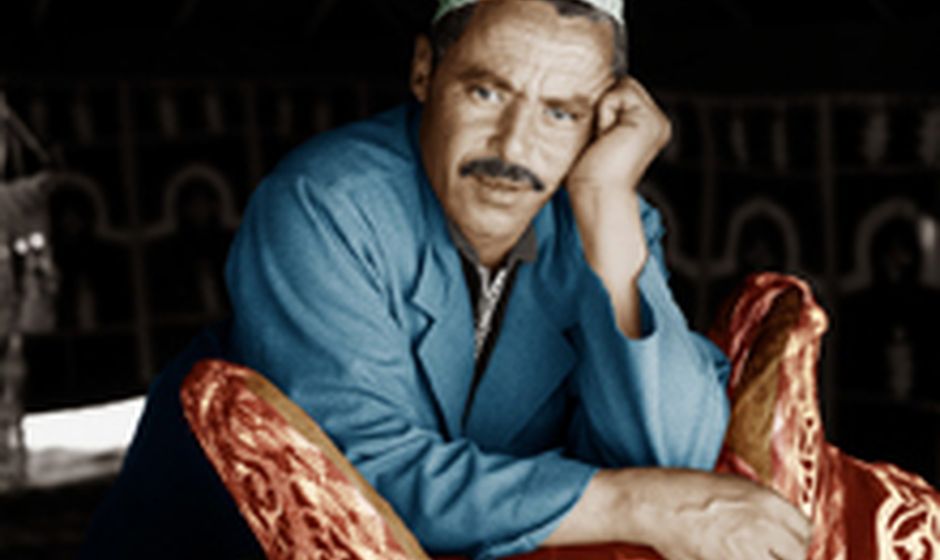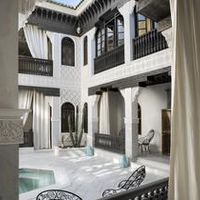
Morocco is a country of multi-ethnic groups with a rich culture and civilisation. Through Moroccan history, Morocco hosted many people in addition to the indigenous Berbers, coming from both East (Phoenicians, Jews and Arabs), South (Sub-Saharan Africans) and North (Romans and Vandals). All of which have had an impact on the social structure of Morocco. It conceived many forms of beliefs, from paganism, Judaism, Christianity to Islam.
Each region possesses its own uniqueness, contributing to the national culture. Morocco has set among its top priorities the protection of its diversity and the preservation of its cultural heritage.
The traditional dress for men and women is called djellaba; a long, loose, hooded garment with full sleeves. For special occasions, men also wear a red cap called a bernousse, more commonly referred to as a Fez. Women wear kaftans decorated with ornaments. Nearly all men and most women wear balgha (بلغه) —- soft leather slippers with no heel, often dyed yellow. Women also wear high-heeled sandals, often with silver or gold tinsel.
The distinction between a djellaba and a kaftan is that the djellaba has a hood, while a kaftan does not. Most women’s djellabas are brightly coloured and have ornate patterns, stitching, or beading, while men's djellabas are usually plainer and coloured neutrally. Women are strongly attached to their "Moroccan wardrobe," despite the financial costs involved; the production of such garments is relatively expensive, as most of the work is done by hand, yet most women purchase a minimum of one new kaftan or takchita every year, normally for a special social event, such as a religious festival or a wedding. Nowadays, it is an unwritten rule that traditional Moroccan dress is worn at such events.
Dar, the name given to one of the most common types of domestic structures in Morocco, is a home found in a medina, or walled urban area of a city. Most Moroccan homes traditionally adhere to the Dar al-Islam, a series of tenets on Islamic domestic life. Dars are typically composed of thick, high walls that protect inhabitants from thievery, animals, and other such hazards; however, they have a much more symbolic value from an Arabic perspective. In this culture the exterior represents a place of work, while the interior represents a place of refuge. Thus, Moroccan interiors are often very lavish in decoration and craft.
Upon entering a dar, guests move through a zigzagging passageway that hides the central courtyard. The passageway opens to a staircase leading to an upstairs reception area called a dormiria, which often is the most lavish room in the home adorned with decorative tile work, painted furniture, and piles of embroidered pillows and rugs.
Literature
Morocco has much ancient literature. More modern times have brought three generations of writers who especially shaped 20th century Moroccan literature. The first was the generation that lived and wrote during the Protectorate (1912–56), its most important representative being Mohammed Ben Brahim (1897–1955). The second generation was the one that played an important role in the transition to independence with writers like Abdelkrim Ghallab (1919–2006), Allal al-Fassi (1910–1974) and Mohammed al-Mokhtar Soussi (1900–1963). The third generation is that of writers of the sixties. Moroccan literature then flourished with writers such as Mohamed Choukri, Driss Chraïbi, Mohamed Zafzaf and Driss El Khouri. Those writers were an important influence the many Moroccan novelists, poets and playwrights that were still to come.
During the 1950s and 1960s, Morocco was also a refuge for writers from abroad as Paul Bowles, Tennessee Williams, Brion Gysin, William S. Burroughs and Jack Kerouac.
In 1966 a group of Moroccan writers founded a magazine called Souffles (Breaths) that was prohibited by the government in 1972 but gave impetus to the poetry and modern romantic works of many Moroccan writers.

Overall we had a great time, we would return to Marrakech!
Thanks for your email, overall we had a great time, we would return to Marrakech, and we would definitely recommend you to all of our friends that are thinking of going to Morocco.
The La Sultana was fantastic in every aspect, and especially the staff. The Balloon flight was a bit disappointing, in part due to the weather. The guided …
Susan d'Arcy from The Sunday Times travelled to Marrakech with Lawrence of Morocco in July 2012.
We really know Morocco and have had the pleasure of making many people's dream trips become reality over the years. It has been our privilege to be asked to manage holidays, weddings and productions for so many fantastic and discerning clients. We remain small and dedicated to providing excellent honest advice to enable you to sit back, relax and enjoy the fun bits without having to manage the unpredictability of this fascinating country.
If you want it done right, look no further!